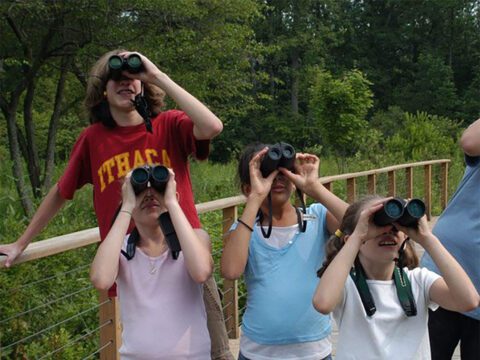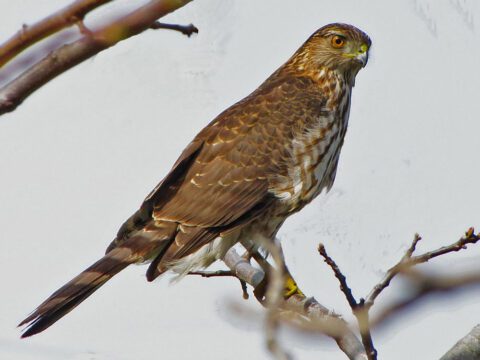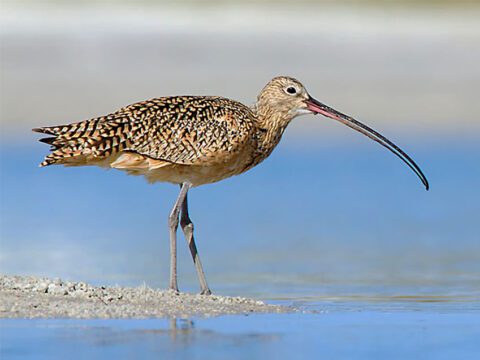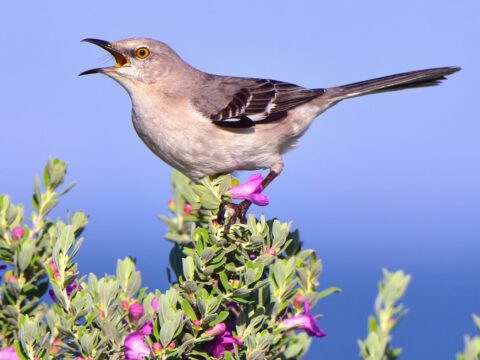Slideshow: Shorebirding in Peru
By Nate Senner
March 3, 2010
We were expecting great things during the last two stops in the survey of Peru’s coastline—spectacular desert scenery and thousands of shorebirds—and we were not disappointed. After morning talks and a great lunch at the Universidad Cientifica del Sur, we simply took a short walk to the wetlands of Pantanos de Villa and were met by Franklin’s and Belcher’s Gulls, Elegant Terns, Sanderlings, and Whimbrels. Just what we needed to practice the difficult art of estimating the size of large flocks. Our workshop’s 60 participants finished the day with close looks (through scopes generously loaned by Nikon) at Semipalmated and Least sandpipers—the most complicated identifications of the day.
The next day we put our flock-estimation skills into practice with more than 11,000 shorebirds in nearby Paracas and Ventanilla wetlands. But we were most surprised by Javier Barrio, of the Peruvian conservation-science group Corbidi, and his group’s tally at Bahía de Independencia. They found more than 3,000 calidrid sandpipers (or “peeps”) and 200 Snowy Plovers—at a place that offered only 239 shorebirds (and zero peeps) in the original 1985 survey by Canadians Morrison and Ross. Either the earlier surveyors missed something or things have been changing at Bahía de Independencia, for the better!
We also picked up some uncommon species at these central Peru sites: I had five Wilson’s Phalaropes and four Stilt Sandpipers at Puerto Viejo, Dennis Osorio had a Hudsonian Godwit at the Humedales de Chancay, and Marshall Iliff had a Marbled Godwit at Laguna Paraíso.
Next, we carried our good luck northward to the city of Piura for our last workshop. Northern Peru lacks the severe desert coasts and cold offshore waters of southern Peru. Once you reach La Libertad department, the air gets more humid, actual trees begin to appear, and soon you’re in lush tropics replete with mangrove forests and sweltering heat and humidity.
The birds change in tandem with the climate. Gone, for the most part, are the massive flocks of Franklin’s Gulls, Peruvian Boobies, and Elegant Terns; they’re replaced by Laughing Gulls, Blue-footed Boobies, Royal Terns, and Magnificent Frigatebirds. There’s also the exciting prospect of rare species wandering down from the tropics: In the past few years more than a few first Peruvian records have come from exploring areas such as the Virrila estuary and Tumbes mangroves. At least a couple of the birders among us were hoping for just such a sighting during our time in those areas…
In many ways, this final workshop, in the small town of Vice, was our best. The turnout included an excellent 35 students and enthusiasts who came from as far as eight hours away. The alcalde (mayor) of Vice gave us a personal welcome. An oil company plans to construct a pipeline and port in the nearby mangroves of San Pedro de Vice, and the alcalde said he hoped the interest inspired by our work might help to forestall the development plans.
In the next day’s censuses, the shorebirds once again did not disappoint. Brad Andres, whose groups were covering San Pedro and the nearby Virilla estuary, found some of the highest counts from anywhere along the Peruvian coast, including a whopping 1,100 Whimbrel, 500 Black-bellied Plover, 600 Willets, and 53 Marbled Godwits. Hopefully numbers like those can lend some credence to the arguments being put forth by Vice’s alcalde and a handful of local conservation groups.
Elsewhere, we saw fewer birds but arguably had more fun. Fernando and I needed to survey some small wetland units to the north, in an area that is Peru’s equivalent of the beaches around Miami—hip, hot, and crowded with people. The scene’s epicenter is a resort town called Mancora, and it happens to have a number of lagoons that Fernando and I needed to survey.
Knowing full well how crowded the beaches would get, we set out early. Our day started well: We surveyed all three of our lagoons and our beach transect well before any beachgoers had arrived. But during our return to the main highway we began encountering more and more sunbathers and frolickers. Worse, we realized we could no longer drive back out the way we had come in—we were going to have to keep driving south looking for another exit from the beach.
Soon we were on Mancora’s main beaches, with thousands of people swarming around us, all wondering why two dirty guys were driving a pickup truck across their beach! All that I could imagine was that somehow we would get stuck and no one would help us get out. Apparently Fernando was more concerned that we would run over a small child chasing after a soccer ball. Either way, we knew we were somewhere we shouldn’t be!
Thankfully, in the end we made it out, sans injury and with only moderate embarrassment. And how many shorebirds did we count for our trouble? A measly seven species and twenty-seven individuals!
The next day saw the end of our surveys and the conclusion of one of the most successful field projects I have ever been a part of. We surveyed the entire Peruvian coast for the first time in 25 years and involved nearly 150 participants from all over Peru (more detailed survey results are here). We hope that energy and interest will carry on and encourage more Peruvians to help safeguard their coastline and its inhabitants. It will be exciting to see what the next few years will bring.
Images by Marshall Iliff. Thanks to Fernando Angulo, Brad Andres, Luis Alza, Nataly Aranzamendi, Javier Barrio, Stephen Gast, Marshall Iliff, Richard Johnston, Daniel Lane, Alex More, Daniel Osorio, Thomas Valqui, and all of the other participants! And many thanks to Nikon for providing great telescopes.

All About Birds
is a free resource
Available for everyone,
funded by donors like you
American Kestrel by Blair Dudeck / Macaulay Library




